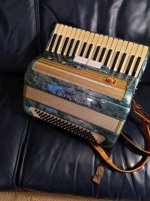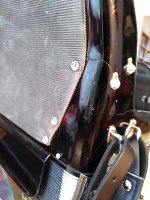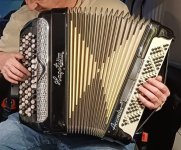niels
Active member
hi all, been away for a while ... Hope you're all doing well 
Holiday starts tomorrow, will be slowly heading south to Italy.
I am preparing for the Accordion Repair Course. Will be taking three accordions with me to work on.
First is a Marinucci piano accordion, simple model. Some of the keys stick sometimes.

The other two are CBA. One is a Victoria which had a crack repaired but not finished nicely. Hopefully I can learn how to get that done correctly.

The third is a Hagström / Universal, a decent accordion, did some work on it already. But some notes sound rough, can't figure out what causes it.

Very much looking forward to the coming weeks!
Holiday starts tomorrow, will be slowly heading south to Italy.
I am preparing for the Accordion Repair Course. Will be taking three accordions with me to work on.
First is a Marinucci piano accordion, simple model. Some of the keys stick sometimes.

The other two are CBA. One is a Victoria which had a crack repaired but not finished nicely. Hopefully I can learn how to get that done correctly.

The third is a Hagström / Universal, a decent accordion, did some work on it already. But some notes sound rough, can't figure out what causes it.

Very much looking forward to the coming weeks!
